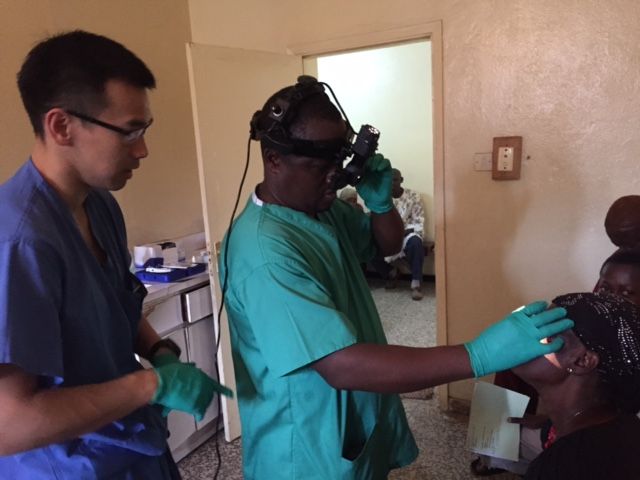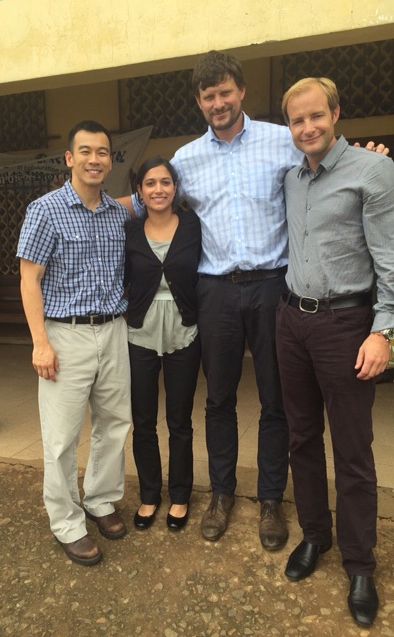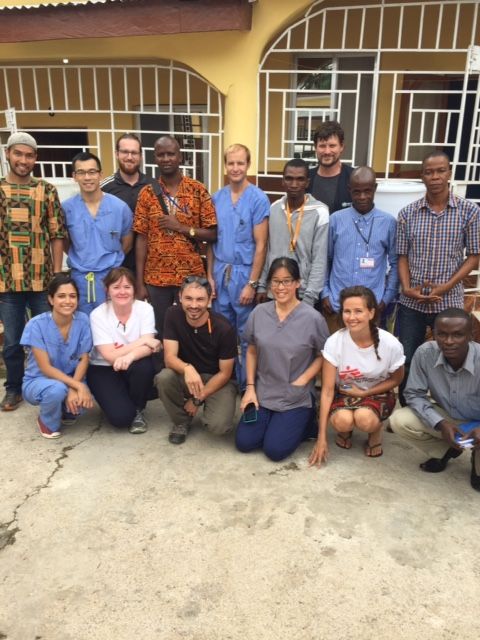Article
Ebola and the eye
The unexpected discovery of viable Ebola virus in the eye of a patient who had recovered from the systemic disease has strengthened efforts to learn more about ophthalmic and systemic complications of Ebola survivors and has translated to management and follow-up strategies in West Africa.
Take-home message: The unexpected discovery of viable Ebola virus in the eye of a patient who had recovered from the systemic disease has strengthened efforts to learn more about ophthalmic and systemic complications of Ebola survivors and has translated to management and follow-up strategies in West Africa.
Reviewed by Steven Yeh, MD, and Jessica G. Shantha, MD
Atlanta-Infectious disease specialist Ian Crozier, MD, made medical headlines twice in recent months-first as one of the critically ill healthcare workers transported from West Africa to the United States after being diagnosed with acute Ebola virus disease (EVD), and again when the live virus was found in his aqueous humor weeks after he had been declared free of the disease.
Dr. Crozier’s development of anterior uveitis-which progressed to a sight-threatening panuveitis-alerted the medical community that the post-EVD syndrome has implications for individual and public health, according to Steven Yeh, MD, one of the physicians at Emory University Hospital, Atlanta, who treated Dr. Crozier.
Editorial: Beware venom ophthalmia
“Even though the acute outbreak status has improved significantly and has faded from media attention, there are still thousands of survivors who require ongoing care for their ophthalmologic issues as well as their systemic issues,” said Dr. Yeh, associate professor of ophthalmology, Emory Eye Center.
“Many groups are working together to think about ways that we can strategize how we can not only screen patients but provide a higher level of care for a potential uveitis outbreak of a larger magnitude,” he added. “In addition, their focus is on disseminating more knowledge about this disease and to have discussions about complicated scenarios that are novel.”
Recent: Everything you need to know about the myopia pandemic
Other issues that are ongoing for Ebola survivors who have already lost so much are mental health issues, psychosocial stressors, problems with pregnancy, arthritis, and arthralgia, Dr. Yeh noted.
Ocular symptoms present

Steven Yeh, MD, with a physician performing an indirect exam on patients at the Lunsar Baptist Eye Clinic in Port Loko District, Sierra Leone. (Image courtesy of Jessica G. Shantha, MD)
Ocular symptoms present
Dr. Crozier, who had been working in an Ebola treatment unit in Sierra Leone, was treated for 40 days then discharged when blood and urine tests for the virus were negative. But 14 weeks after his initial diagnosis, he developed ocular symptoms.
As his condition worsened, Dr. Yeh and Jessica G. Shantha, MD from the Emory Eye Center, along with infectious disease physicians from the Emory University Hospital Serious Communicable Diseases Unit, intervened with procedures including a paracentesis of the anterior chamber.
More from this author: IRIS Registry may do more than improve patient outcomes
“That led to the identification of live Ebola virus in the eye both by culture and also by molecular testing,” Dr. Yeh said.
Dr. Crozier was treated with a combination of oral, topical, and local corticosteroids and an oral antiviral medication. His symptoms improved over several months, and he subsequently has returned to Liberia and Sierra Leone to continue his volunteer work with Ebola survivors.
Managing ocular complications

From Left: Steven Yeh, MD, Jessica G. Shantha, MD, Ian Crozier, MD, and Brent Hayek, MD, outside the Lowell and Ruth Gess UMC Eye Hospital in Freetown, Sierra Leone. (Image courtesy of Jessica G. Shantha, MD)Managing ocular complications
One discovery from this case that will be useful in managing the ocular complications of EVD was that conjunctival and tear film samples taken both before and after the anterior chamber paracentesis tested negative for the virus.
This has implications for the clinical examination of Ebola survivors from an infection control and precaution guidance standpoint, but more invasive procedures are still being vetted in terms of the right way to proceed for ophthalmologists abroad,” Dr. Yeh said.
Recent: Virtual trial designed to explore AMD monitoring
“The prevalence of the persistence of the Ebola virus in intraocular fluid is still unknown,” he said. “Further study is needed.”
Emory physicians seized the opportunity of this unprecedented case to launch research and outreach efforts. During the critical treatment stages, they were unsure whether the case was an outlier or whether other Ebola patients and survivors had similar complications.
“We looked in the literature and found some case reports of Ebola-associated uveitis, so we thought this might be a real problem,” said Dr. Shantha, who was then an ophthalmology resident and is currently a medical retina fellow at the Retina Consultants of Hawaii.
“We started to reach out to various ophthalmic non-governmental organizations in Liberia and Sierra Leone to see if anyone had seen this aggressive sight-threatening panuveitis, but also, as Dr. Crozier got better, we thought that the lessons we learned could be translated and help with the care of survivors in West Africa,” Dr. Shantha said.
Examining Ebola survivors

Group picture of eye partners at a mobile clinic in Tonkolili, Sierra Leone. (Image courtesy of Jessica G. Shantha, MD)In collaboration with lead clinician Dr. John Fankhauser and providers from Serving in Mission / Eternal Love Winning Africa Hospital and other organizations, Drs. Yeh, Shantha, Crozier, and Brent Hayek traveled to Monrovia, Liberia, to set up a mobile clinic and examine Ebola survivors.
“We noted different ocular complications, including cranial nerve problems, optic neuropathy, and the most common finding, uveitis, in less than 25% of patients,” Dr. Shantha said. “We realized that uveitis is an issue and is something that providers in West Africa need to be aware of.
Recent: Acrylic conformers effective in congenital anophthalmia
“In addition, since we found Ebola virus in the ocular fluid of Dr. Crozier, we wanted to be sure that ophthalmic providers were aware of these findings because this could potentially be a source of an outbreak and a source of exposure for patients and ophthalmic providers,” Dr. Shantha said.
Contact between Emory physicians and providers and organizations abroad has continued, including a trip to Sierra Leone in the summer of 2015 to bring supplies, provide treatment protocols, screen and manage patients, and hold educational programs.
Find out how cataract surgery may cut glaucoma risk in some patients
Other organizations including Partners in Health, Medecins Sans Frontieres, Ministry of Health and Sanitation, and in-country eye care providers are providing ongoing ophthalmic care for thousands of Ebola survivors in West Africa. Further trips to West Africa are being planned.
In addition, groups such as the World Health Organization are developing guidelines for care and follow-up of Ebola survivors.
Jessica G. Shantha, MD
Steven Yeh, MD
P: 404-778-5070
This article was adapted from Dr. Yeh’s presentation at the 2015 meeting of the American Academy of Ophthalmology. Dr. Shanta and Dr. Yeh did not indicate any proprietary interest in the subject matter.
Newsletter
Don’t miss out—get Ophthalmology Times updates on the latest clinical advancements and expert interviews, straight to your inbox.




